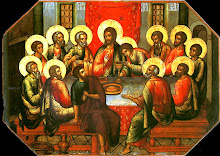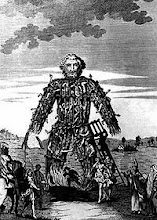 John Murphy at Godspy writes on the indelible necessity of beauty (along with truth and goodness, of course):
John Murphy at Godspy writes on the indelible necessity of beauty (along with truth and goodness, of course):The fact of Original Sin makes ignoring humanity’s fallen state impossible for the artist, which is why the Christian mode of beauty can have a sublime terror or despair, as in Michelangelo’s Last Judgment or Górecki’s Symphony of Sorrowful Songs. With reference to the unblinking naturalism of O’Connor’s prose, the Archbishop of Canterbury wrote, “The tightrope that the Catholic writer must walk is to forget or ignore nothing of the visually, morally, humanly sordid world, making nothing easy for the reader, while doing so in the name of a radical conviction that depends on that world being interrupted and transfigured by revelation.” Thus, Christian faith does not limit but rather expands an artist’s sensibility for the simple reason that Christianity is all-inclusive of joy and suffering, hope and despair, sin and redemption. As JRR Tolkien put it, “there is no story without the fall.”
By becoming “subcreators” with God of authentically beautiful art that is both of its time and suffused with perennial truth, artists can participate in a new kind of evangelization. In the words of Image journal editor Gregory Wolfe, “Beauty is making a comeback.” (His own journal testifies to this). Ron Hansen’s slim, haunting novel, Mariette in Ecstasy, published in 1992, belongs on a shortlist of the great Catholic novels. Another recent example was the remarkable success of The Passion of the Christ, with its Caravaggio-inspired visual scheme. More telling, perhaps, is the spate of secular art that taps into the deep vein of Christian philosophy—the bruising beauty and life-affirming message of Alfonso Cuarón’s Children of Men, the sophisticated albums of singer-songwriter Sufjan Stevens, the near-biblical pitch of Cormac McCarthy’s prose, or the Christ-infused finale of the Harry Potter series. The experience of great art, whether religious or secular, nearly always has a spiritual dimension—an interstice in daily life where the luminous eternal breaks through.
The luminous eternal is truth, goodness, and beauty. Of the three, beauty may be the best proselytizing force because we respond to it willingly, happily. Whether the object of our attention is a striking painting, a lyrical prose passage, or a glorious piece of music, humans are hardwired to delight in beautiful things. To adopt Oscar Wilde’s formula, Beauty is higher than Genius because it needs no explanation. It simply is. That is why modern art relies so much on theory.
Beauty is not just icing on the cake; beauty is substantial, essential. In his introduction to the Glory of the Lord, the great theologian Hans Urs von Balthasar addressed the mystery of beauty and its utter necessity. I leave him with the final, eloquent word:
“Beauty is the disinterested one, without which the ancient world refused to understand itself, a word which both imperceptibly and yet unmistakably has bid farewell to our new world, a world of interests, leaving it to its own avarice and sadness. No longer loved or fostered by religion, beauty is lifted from its face as a mask, and its absence exposes features on that face which threaten to become incomprehensible to man. We no longer dare to believe in beauty and we make of it a mere appearance in order the more easily to dispose of it. Our situation today shows that beauty demands for itself at least as much courage and decision as do truth and goodness, and she will not allow herself to be separated and banned from her two sisters without taking them along with herself in an act of mysterious vengeance. We can be sure that whoever sneers at her name as if she were the ornament of a bourgeois past – whether he admits it or not – can no longer pray and soon will no longer be able to love.”








No comments:
Post a Comment